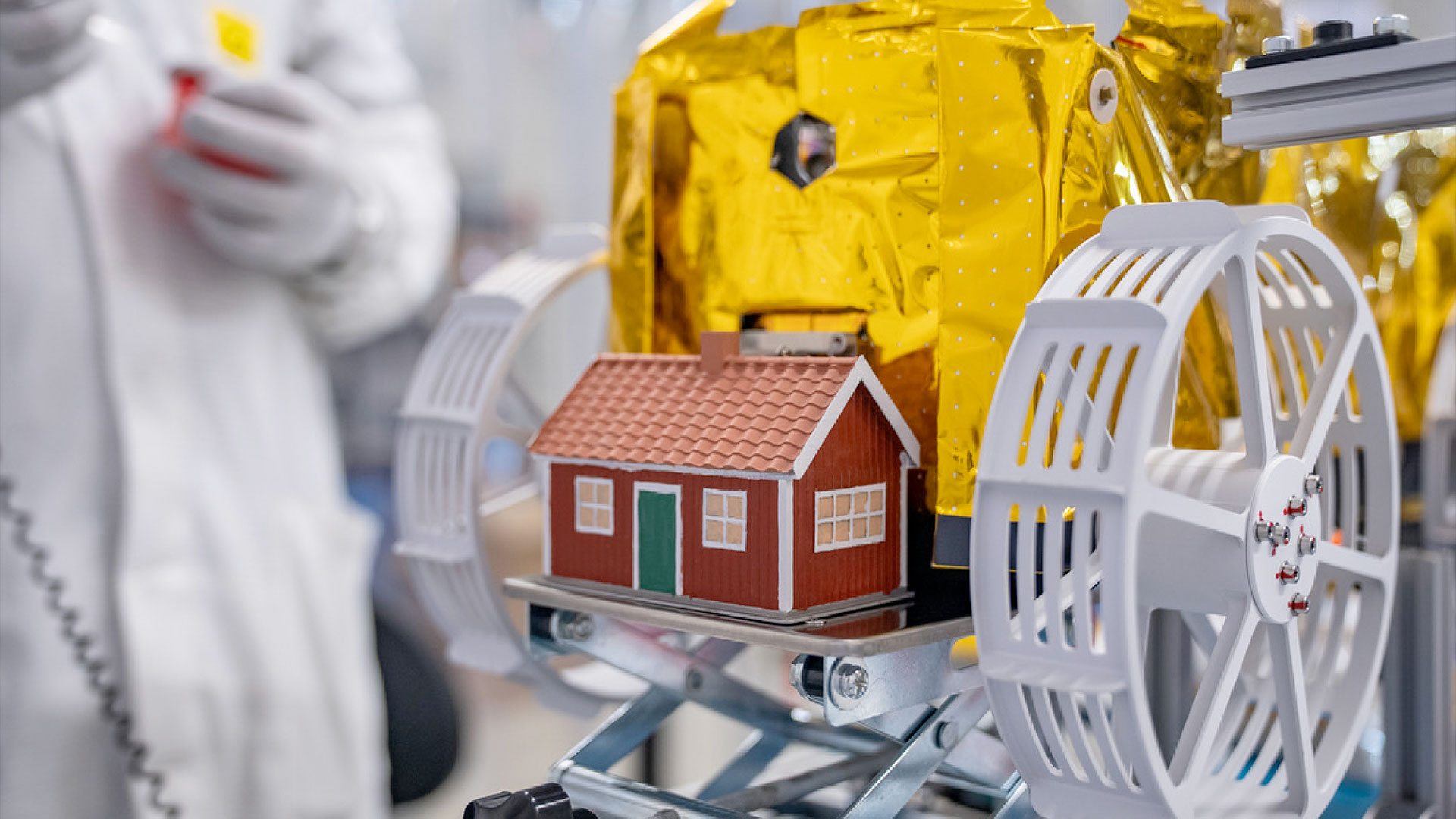NASA sun observatory spies Comet Atlas in the solar wind. (Mercury, too!)

You'll need a minute to take it all in, there's a lot going on in this stunning view of the inner solar system, including a comet, Mercury and some solar weather.
First, let's get oriented. You're looking through the eyes of NASA's Solar Terrestrial Relations Observatory A, or STEREO-A. The spacecraft launched in 2006 with its now-silent twin to study the sun, in particular from angles we can't see from Earth. The spacecraft is about one-sixth of an orbit ahead (hence the A in its name) of Earth, with the sun off-screen to the left in the new images.
There's a lot of ambiance in the neighborhood. The pale haze gusting in from the left of the image is the solar wind, the charged particles that constantly stream out of the sun and across the solar system, creating the bubble Earth and its neighbors move through. And of course there are countless stars, some that appear to be standing on bright stalks (the streaks are just flukes in the image). Near the end of the loop, Mercury crosses into view from the left side of the image, moving across the background of stars, according to a NASA statement.
Related: That's the way the comet crumbles: Hubble image shows remains of Comet ATLAS
And STEREO-A's location was a perfect vantage point to catch sight of a comet that threw skywatchers into a frenzy this year, dubbed Comet ATLAS. Astronomers first spotted the object at the end of December, and soon identified it as a comet new to Earth's neighborhood. Skywatchers had high hopes Comet ATLAS would grow incredibly bright and put on a good show as it approached the sun.
Instead, Comet ATLAS began falling apart in April, to the disappointment of skywatchers. From STEREO-A's viewpoint, however, the comet's pieces remained close enough to each other to give the impression of a complete hunk of ice, and it's Comet ATLAS that streaks across the new animation from top to bottom. (The animation compiles images taken between May 25 and June 1.)
And out of frame, another spacecraft is also on the scene, the Solar Orbiter launched by NASA and the European Space Agency (ESA). That spacecraft, like STEREO-A, is designed to study the sun, but, through a stroke of good luck, Solar Orbiter's trajectory happened to align with that of Comet ATLAS and its tails.
Get the Space.com Newsletter
Breaking space news, the latest updates on rocket launches, skywatching events and more!
Comet tails come in pairs: an ion tail created of charged particles that points away from the sun at all times and a dust tail of light-reflecting rubble. Solar Orbiter crossed the ion tail of ATLAS on May 31, as these images were being gathered, although the spacecraft is out of frame. The probe was due to cross the dust tail on June 6.
And conveniently, Solar Orbiter happens to be equipped with a few instruments that could take meaningful measurements of these tails. Although the spacecraft, which launched in February, wasn't due to begin its science work until later this month, mission personnel decided the comet was too tempting to pass up, and they arranged for four key instruments to start gathering observations early.
NASA and ESA have not yet announced whether those observations were successful — but at least STEREO-A snagged this awesome view.
- Comet Atlas is falling apart, new photos confirm
- As Comet ATLAS crumbles away, Comet SWAN arrives to take its place for skywatchers
- Photos: Spectacular comet views from Earth and space
Email Meghan Bartels at mbartels@space.com or follow her @meghanbartels. Follow us on Twitter @Spacedotcom and on Facebook.
OFFER: Save 45% on 'All About Space' 'How it Works' and 'All About History'!
For a limited time, you can take out a digital subscription to any of our best-selling science magazines for just $2.38 per month, or 45% off the standard price for the first three months.
Join our Space Forums to keep talking space on the latest missions, night sky and more! And if you have a news tip, correction or comment, let us know at: community@space.com.

Meghan is a senior writer at Space.com and has more than five years' experience as a science journalist based in New York City. She joined Space.com in July 2018, with previous writing published in outlets including Newsweek and Audubon. Meghan earned an MA in science journalism from New York University and a BA in classics from Georgetown University, and in her free time she enjoys reading and visiting museums. Follow her on Twitter at @meghanbartels.

